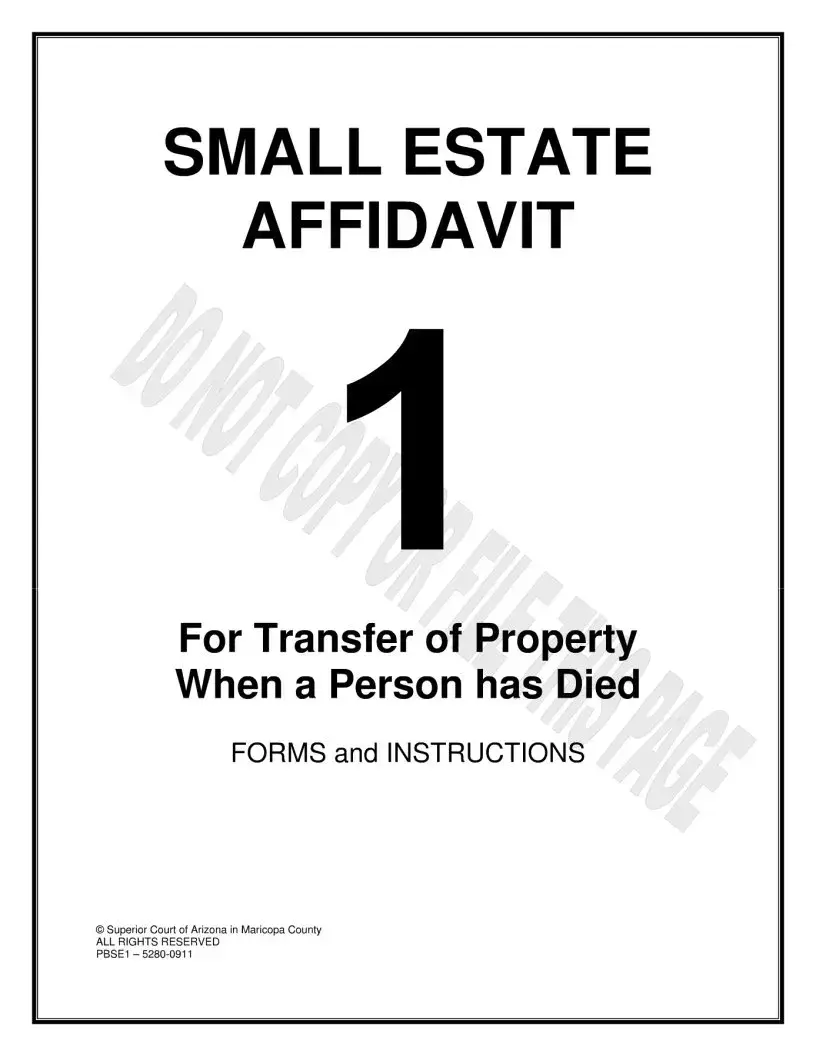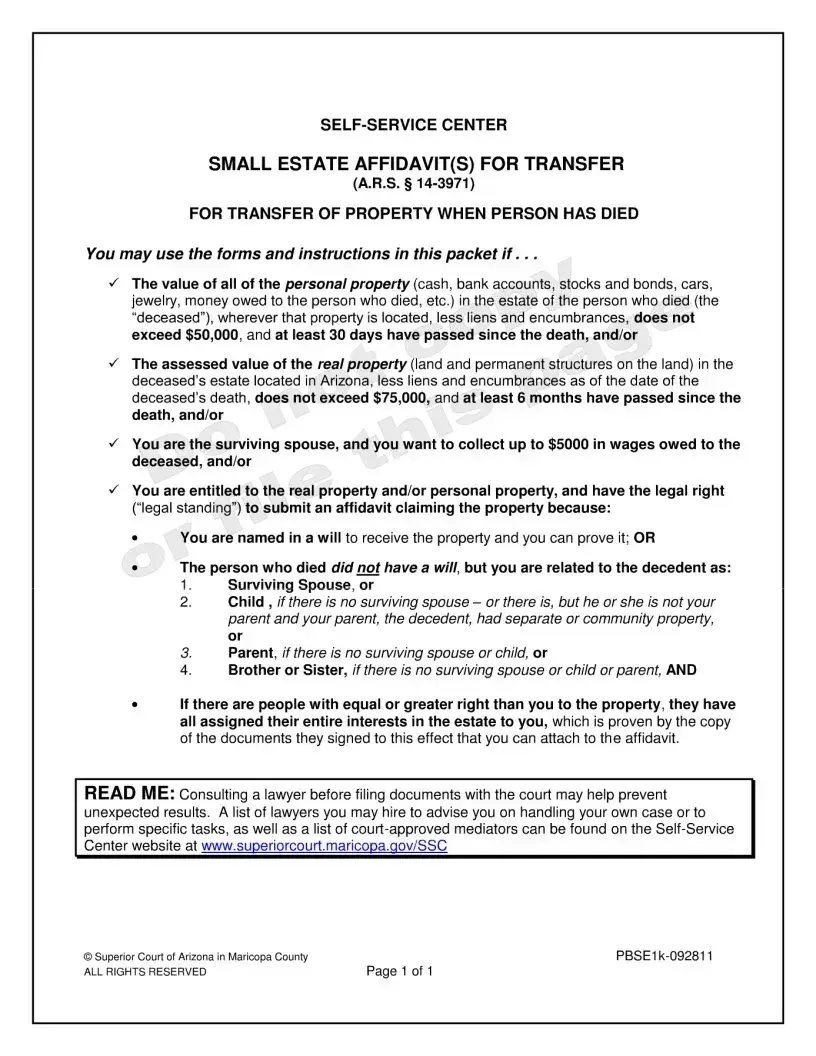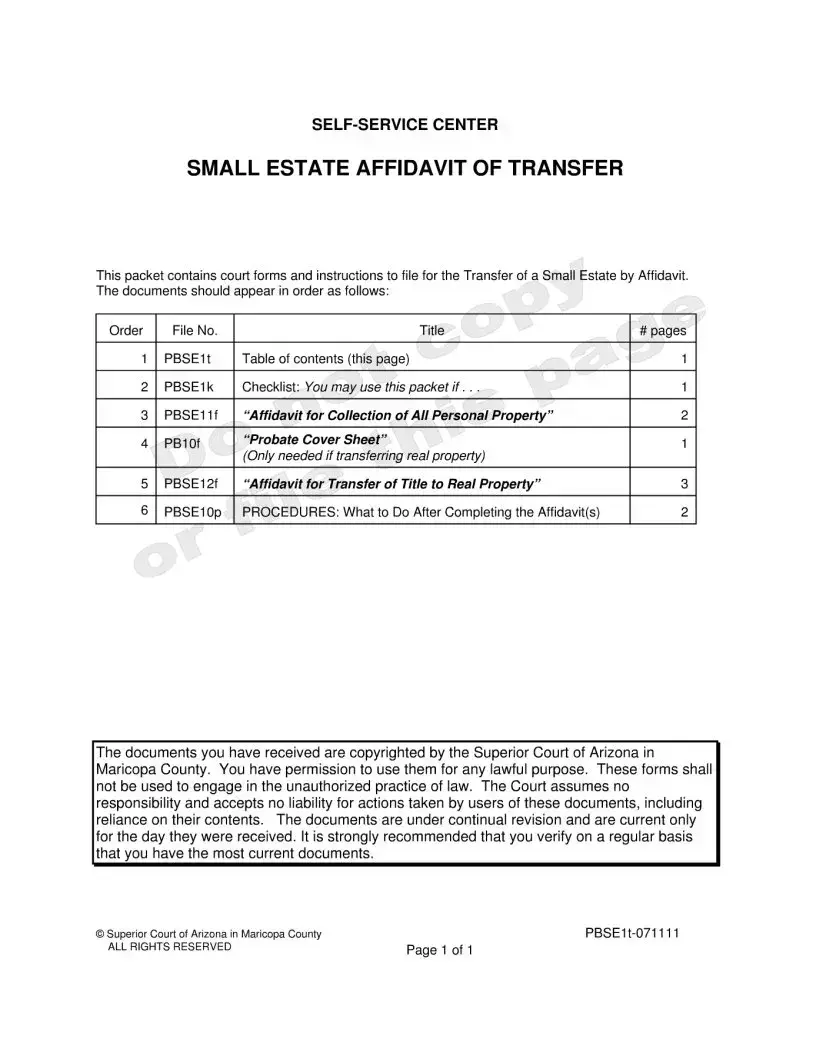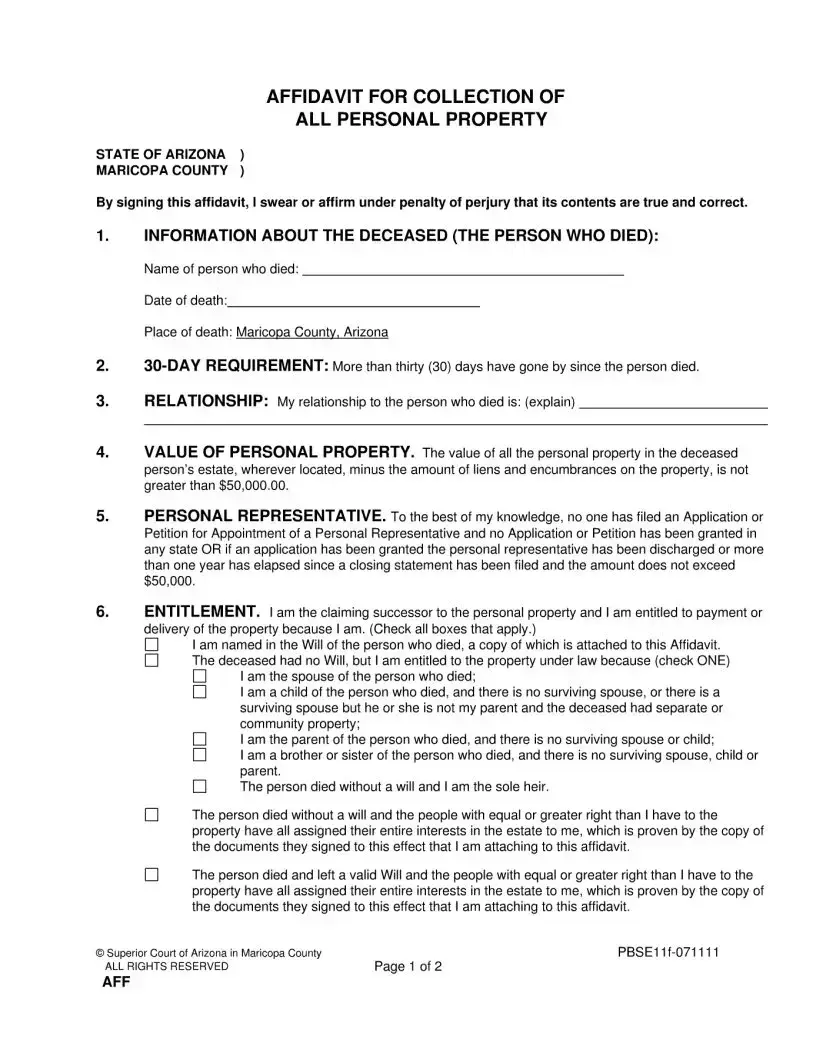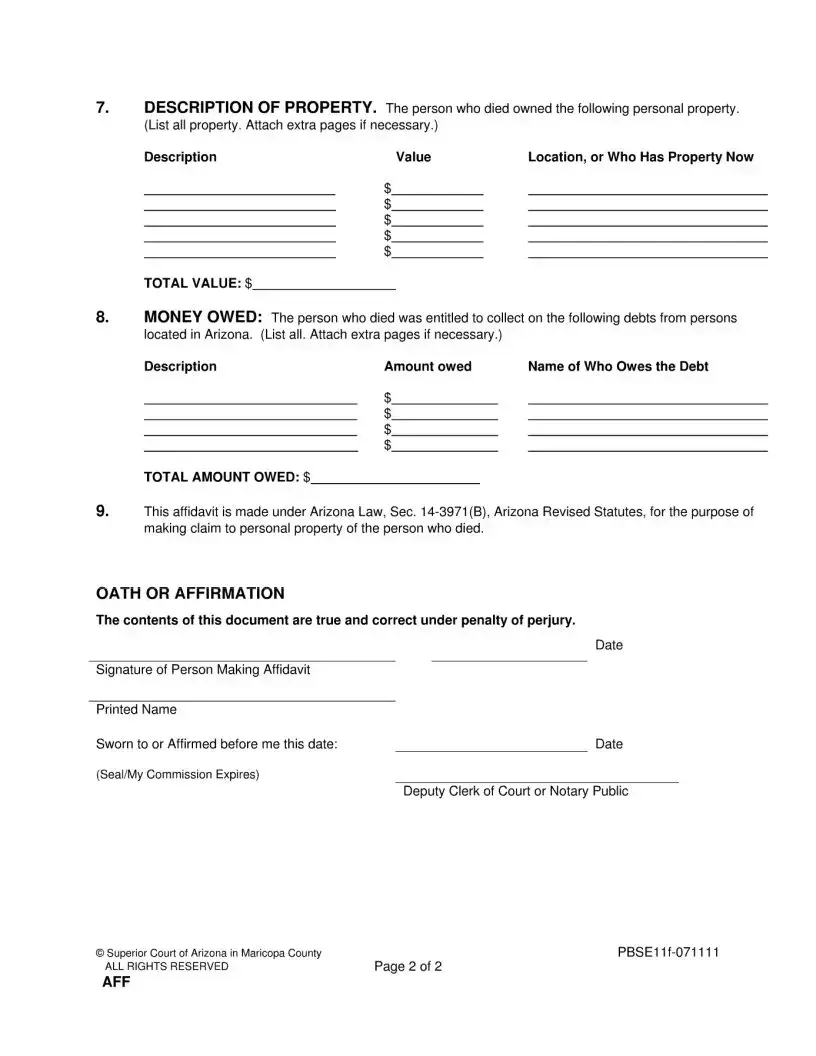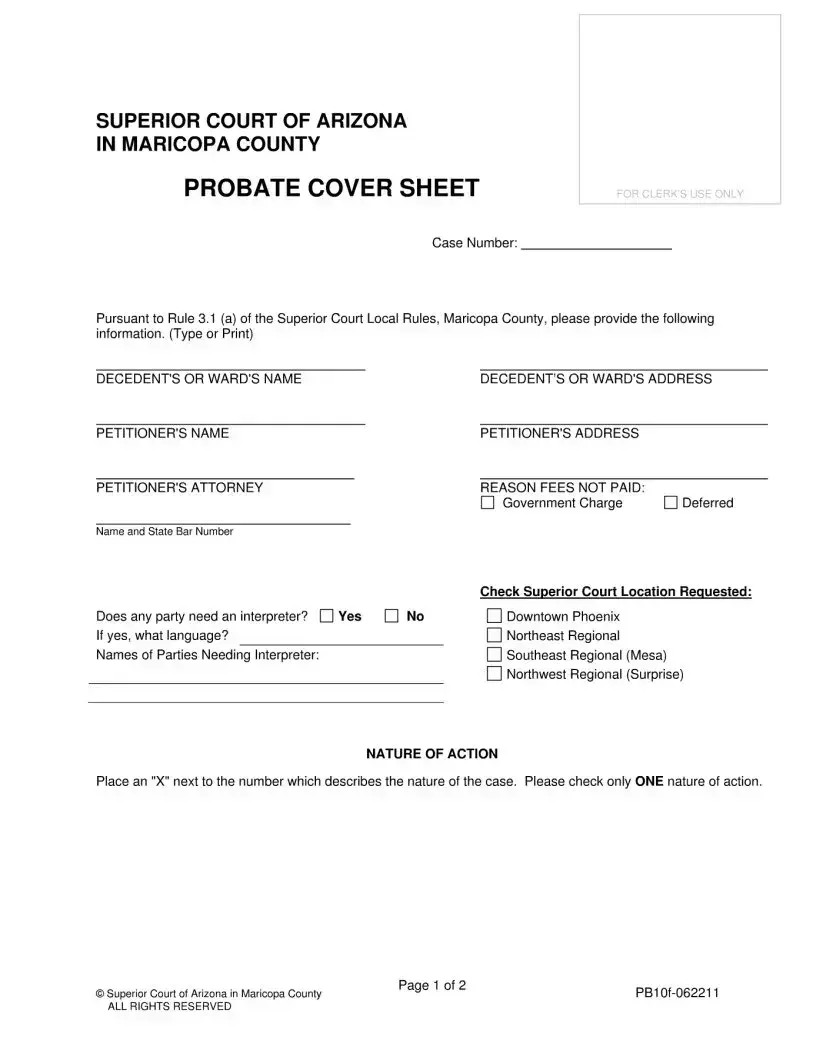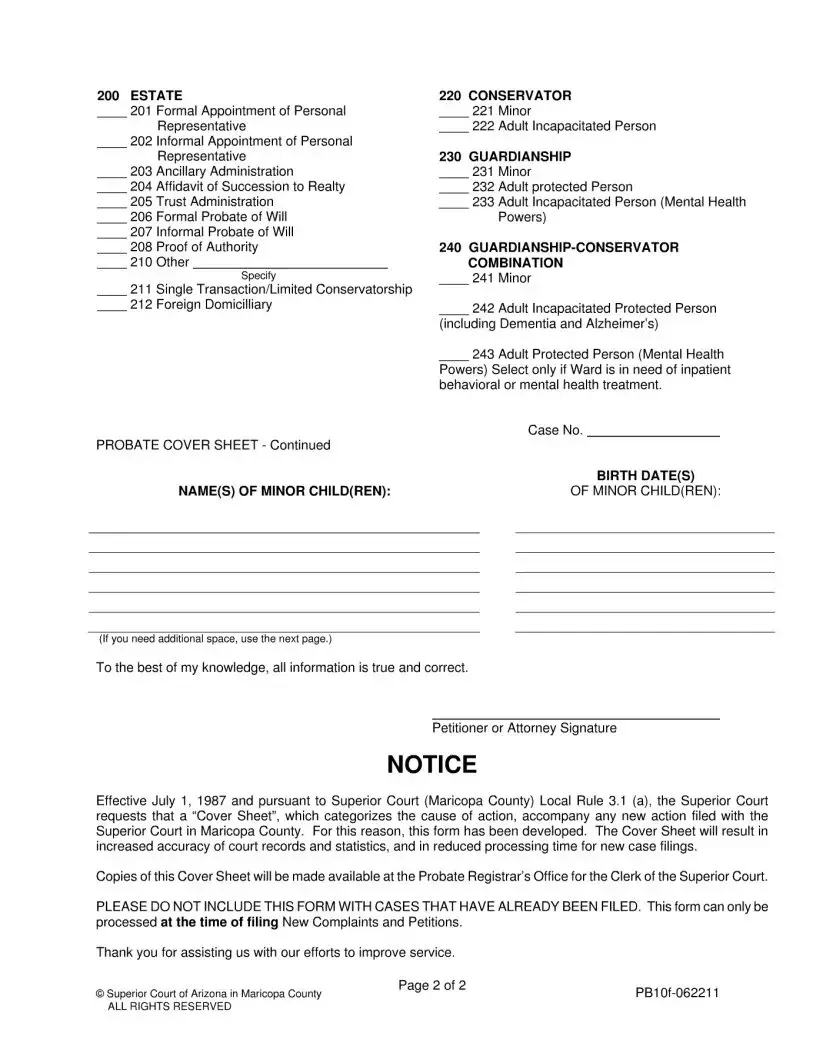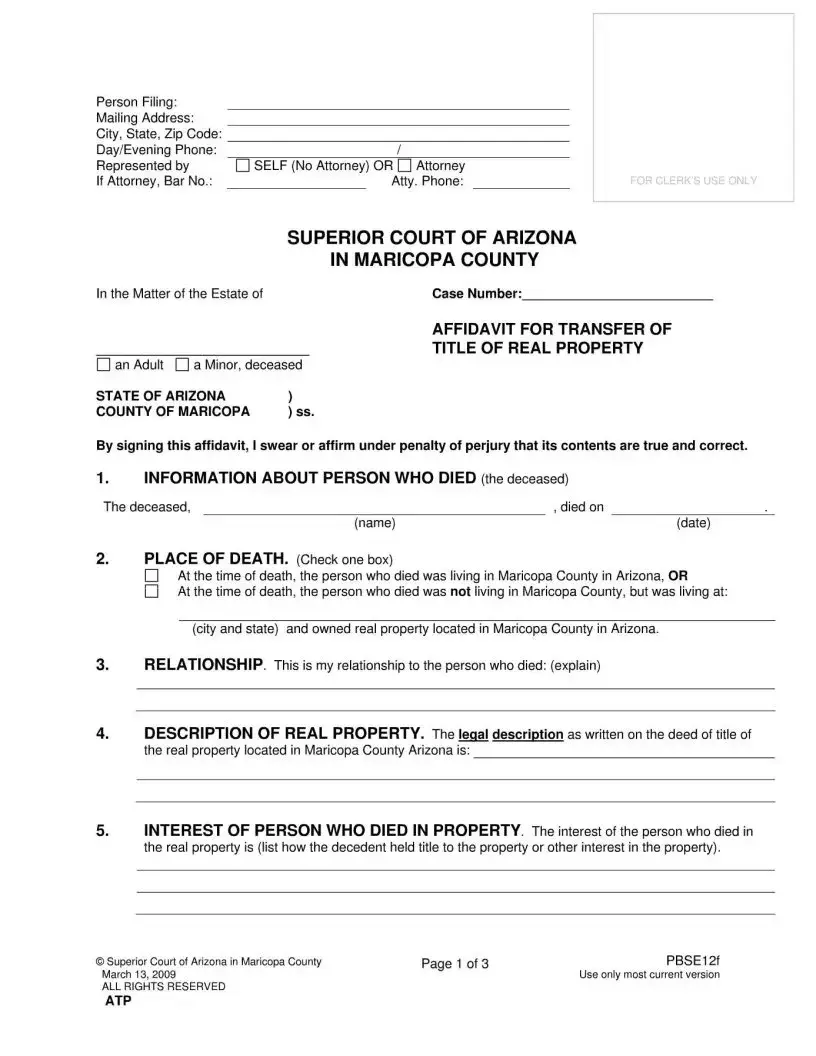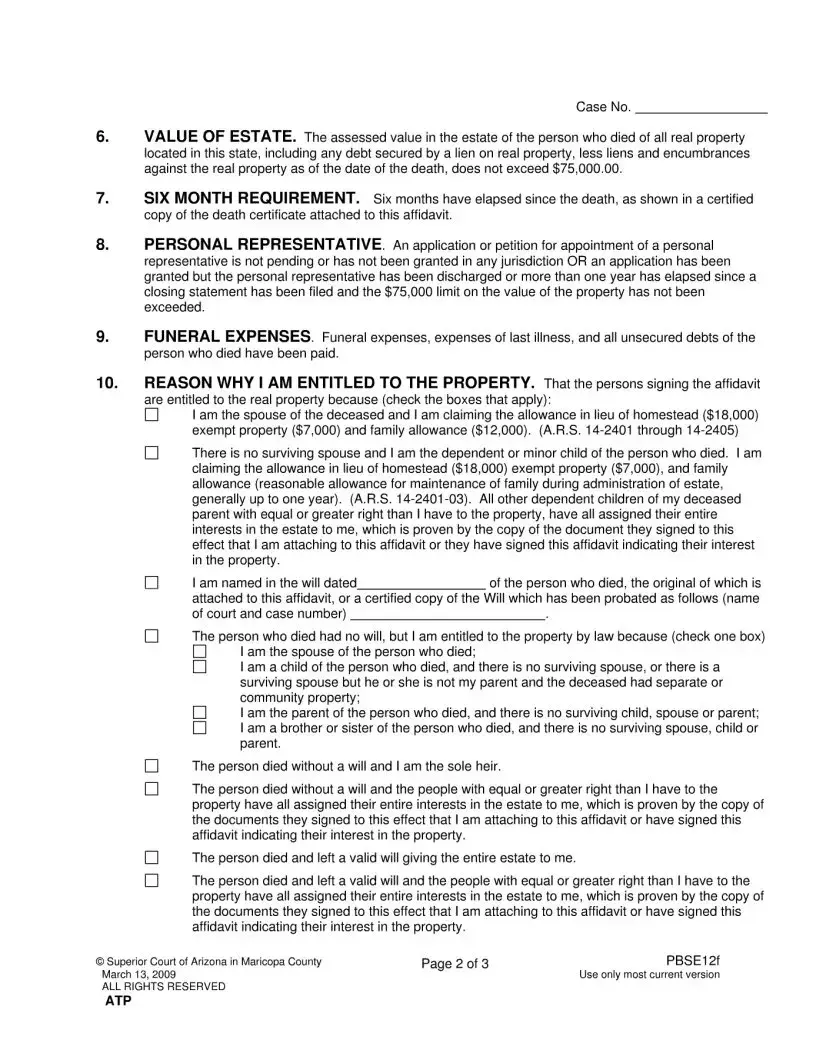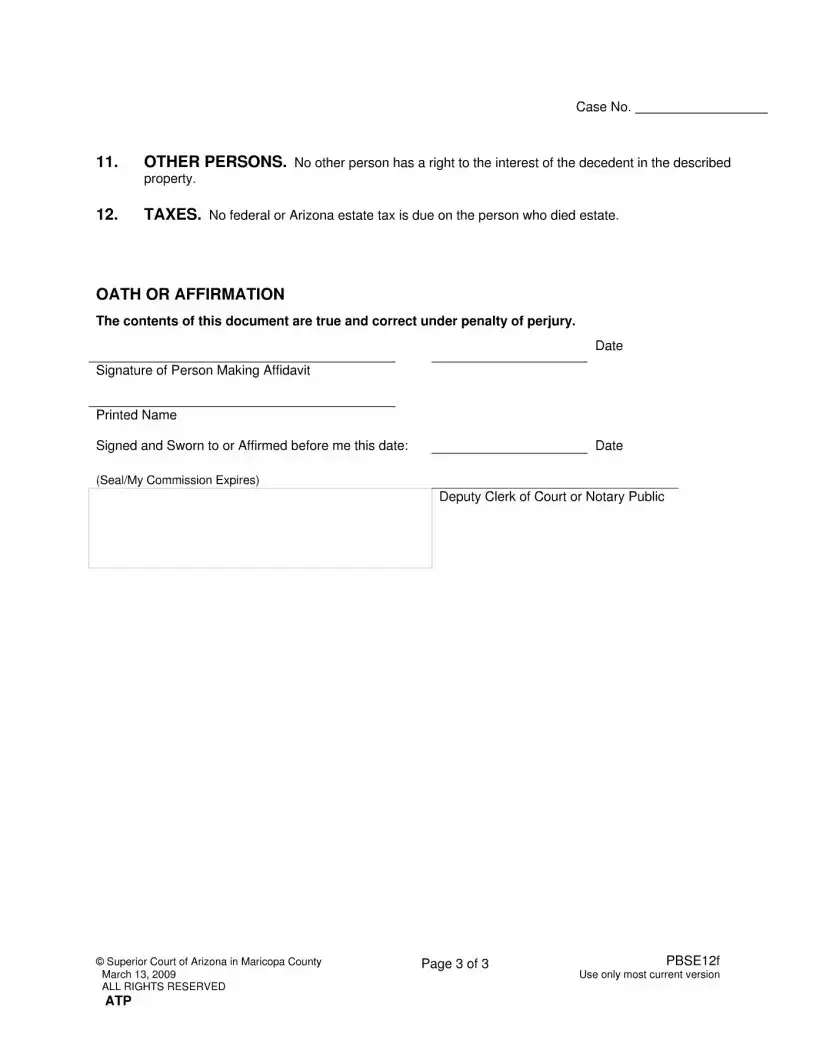What is the Arizona Estate Form used for?
The Arizona Estate Form is primarily used to manage and distribute a person's assets and estate after they pass away. It serves as a legal document that outlines the deceased person's final wishes regarding the disposition of their property, financial assets, and care for any dependents. This form can also specify the executor, who is the individual appointed to manage the estate's settlement according to the document's directives.
Who should fill out the Arizona Estate Form?
This form should be completed by any resident of Arizona who wishes to have their estate managed according to their specific wishes after their death. It is especially important for individuals with significant assets, property, or dependents to consider filling out this form. Completing the form can help ensure a smoother transition and distribution of assets to beneficiaries, as well as potentially alleviate disputes among surviving family members.
Is an attorney required to fill out the Arizona Estate Form?
While it is not mandatory to hire an attorney to fill out the Arizona Estate Form, it is highly recommended. Estate laws can be complex, and an experienced estate planning attorney can offer valuable advice to ensure that the form is completed accurately and aligns with Arizona laws, potentially avoiding costly legal disputes or challenges to the will or estate in the future.
What happens if someone dies without having filled out the Arizona Estate Form?
If a person dies without having completed the Arizona Estate Form, their estate will be distributed according to Arizona's intestacy laws. This typically means that the estate will be divided among the surviving spouse, children, or other family members according to a set hierarchy. This process may not reflect the deceased's wishes and can lead to delays and conflicts among heirs.
Can the Arizona Estate Form be changed once it has been completed?
Yes, the Arizona Estate Form can be modified or revoked by the person who created it at any time before their death, as long as they are legally competent. To change or revoke the document, it is advisable to follow the correct legal procedures and, in many cases, consult with an attorney to ensure the changes are valid and enforceable under Arizona law.
Are there any witnesses or notarization requirements for the Arizona Estate Form?
Yes, for the Arizona Estate Form to be legally binding, it must be signed in the presence of witnesses and, in most cases, notarized. The exact number of witnesses and the notarization process can vary, so it is important to consult current Arizona laws or an attorney to ensure that all legal requirements are met.
What should be included in the Arizona Estate Form?
The form should clearly list all assets, including real estate, bank accounts, personal property, and investments. It should also specify beneficiaries, an executor, guardians for any minor children, and directions for the payment of debts and taxes. Including detailed instructions can help avoid confusion and ensure that the estate is distributed according to the deceased's wishes.
How can I ensure that my Arizona Estate Form is legally binding?
To ensure that the Arizona Estate Form is legally binding, it should be completed in accordance with Arizona laws, including all signature and witness requirements. Consulting an attorney who specializes in estate planning can provide guidance and help in drafting a document that effectively communicates your wishes and meets all legal standards.
